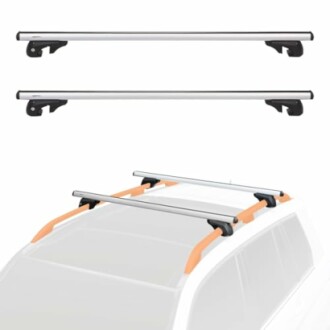
How to Secure Your Kayak Rack for Transportation
Key Takeaways
- Understand the importance of proper kayak rack installation for safety.
- Utilize additional straps and tie-downs for extra security.
- Regularly check and maintain your kayak rack to ensure it remains secure.
- Follow manufacturer recommendations for loading and transporting kayaks.
Transporting your kayak safely has never been more crucial than it is today. Whether you are planning a weekend getaway or a day at the lake, the importance of securing your kayak rack cannot be overstated. In this guide, we will provide you with essential tips and tricks for safely transporting your kayak, ensuring you arrive at your destination without any damage to your kayak or vehicle.
Understanding Your Kayak Rack Options
One of the first steps in making sure your kayak is secure is understanding your kayak rack options. Different types of kayak racks serve different needs. Let's take a look at some common types:
| Rack Type | Features | Best For |
|---|---|---|
| Crossbar Racks | Universal fit, easy to install, and adjustable. | Various vehicle types. |
| J-Cradle Racks | Holds kayak on its side; space-efficient. | Canoes and kayaks. |
| Saddle Racks | Cradles the hull securely; great for long-distance travel. | Long, narrow kayaks. |
Essential Accessories for Securing Your Kayak
Once you've selected the right kayak rack, the next step is to gather the necessary accessories to secure your kayak. Here are some items you might consider:
- Straps and Tie-Downs: Essential for holding your kayak in place. Look for heavy-duty options.
- Deck Pads: These provide extra grip and protection between your kayak and the rack.
- Cushioned Cradles: Help to prevent scratches and distribute the kayak's weight evenly.
- Locking Mechanism: To deter theft and ensure your kayak remains secure.
Featured Product: Secure Your Transport with Amazon Basics
Amazon Basics Cross Bar Roof Rack
This robust roof rack is perfect for kayaks, snowboards, and bikes, holding up to 165 pounds with ease.
Learn MoreTransporting Your Kayak: Step-by-Step Guide
Once you have the right setup and accessories, you need to follow a few crucial steps to ensure your kayak is secured during transportation:
- Attach your kayak rack to your vehicle according to the manufacturer's instructions.
- Place your kayak on the rack - ensure it's centered and properly aligned.
- Use straps to fasten down your kayak at both the front and rear. Ensure they are tight but not overly so that they compress the kayak.
- Check that all connections are secure before you get on the road. Shake the kayak slightly to see if it shifts or feels loose.
- Make a final check during your first rest stop to ensure everything remains secure.
Tips for Traveling with a Kayak Rack
- Make sure to reduce the wind resistance by choosing streamlined racks that minimize air drag.
- Invest in additional cross straps for extra security during long trips.
- Consider covering your kayak with a protective tarp, especially during longer transport.
- Keep the kayak in a completely secured area when it's not in use.
- Be cautious of overhead obstacles or low bridges while driving.
Maintaining Your Kayak Rack
Finally, keep your kayak rack in good working condition to ensure its longevity. Regular maintenance includes:
- Inspecting for rust or corrosion, especially for metal parts.
- Checking the joints and bolts for wear and tear.
- Lubricating the moving parts and locks, if applicable.
- Washing the racks after beach or salty water trips to prevent build-up.
Pros
- Improves safety during transport.
- Prevents damage to both the kayak and your vehicle.
- Easy and quick to secure with the right accessories.
Cons
- Can be challenging to set up initially for beginners.
- Some racks may not fit all vehicles perfectly.
Conclusion
Securing your kayak rack is vital for a safe transport experience. By selecting the right kayak rack, utilizing essential accessories, and following our step-by-step guidelines, you can confidently hit the road knowing your kayak is secured. For more information on kayak options, check out our comprehensive guide on Kayak Racks or explore our Buying Guides to find the right equipment for your adventures.

